| Author |
Message |
|
Jonathan Hopkins
|
 Posted: Mon 01 Jun, 2009 7:38 pm Post subject: British P1821 Royal Artillery Officer's Sword Posted: Mon 01 Jun, 2009 7:38 pm Post subject: British P1821 Royal Artillery Officer's Sword |
 |
|
Here is one of the swords I mentioned in the "Your Last Sword" thread. Comments and questions welcomed!
This is a Pattern 1821 Royal Artillery officer's sword by Henry Wilkinson, made in 1893, and featuring "Patent Solid Hilt" construction. The steel hilt and scabbard are brownish-black with age and old, stabilized rust, and what appears to be black paint on areas of the hilt. The blade is in good condition and is well etched with scrolling foliage, the devices of the royal artillery, and the original owner's monogram; ERP.

Ernest Robert Phillips was born 16 July, 1868. At age 17 he entered the Royal Military Academy, Woolwich and attained his commission as a 2nd lieutenant at age 19. As a young officer, Phillips served with several garrisons including Gibraltar with 3 Battery, Eastern Division and 26 Battery, Eastern Division, from 1890-1892, during which time he was promoted lieutenant (17 February, 1891. From 1892-1893 he served the Eastern Division’s 2nd Sub-Depot in Great Yarmouth, and again for a time he found himself back in Gibraltar. Before embarking for service in India, Phillips had some time to buy a new sword—a nice Pattern 1821 with Patent Solid Hilt.

From February of 1894-1895 Phillips was with Number 4 Company at Fort Saint George, Madras. In 1896 he was attached to Number 5 Mountain Battery, with whom he remained through 1900. In 1897 Phillips took command of No. 5 Mountain Battery which was with the Tirah expeditionary force during the campaign of 1897-98. For his service, Phillips was entitled to the India General Service medal with clasp “Punjab Frontier 1897-98”, and 18 June, 1898 was promoted captain.
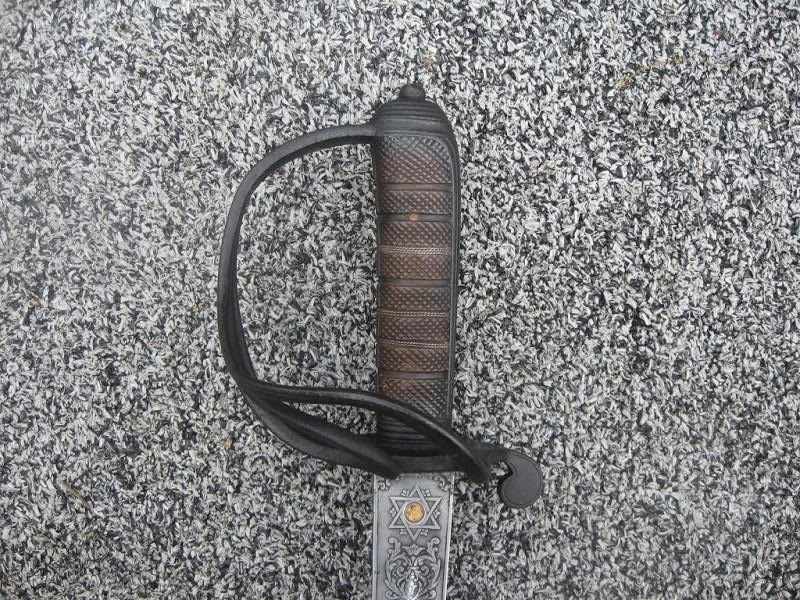
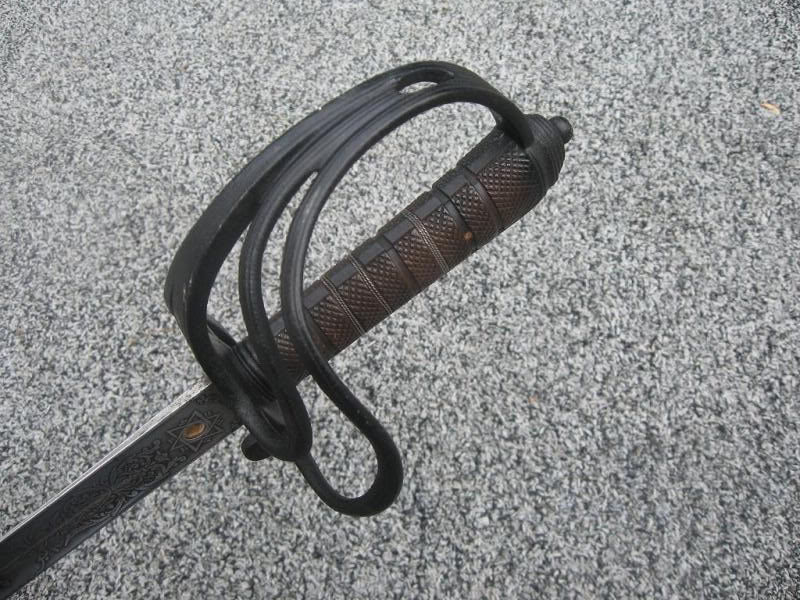
From October, 1900-1902 he served with Number 5 Company, Southern Division at Agra and Aden. Between 1902 and 1908 he served with the Devon Royal Garrison Artillery Militia, 1908 and 1911 he served with the 4 Wexxex Brigade, Royal Field Artillery Territorial Force, and 1911 and 1912 he was in command of the Somerset Royal Horse Artillery Territorial Force.
His promotions during his tenure with the militia and territorial forces are difficult to follow:
Gazette Issue 27600 published on the 25 September 1903:
| Quote: | ROYAL GARRISON ARTILLERY (MILITIA).
The Devon, Captain Ernest Robert Phillips,
Reserve of Officers (late Royal Garrison
Artillery), to be Captain. Dated 26th September,
1903. |
Gazette Issue 28181 published on the 29 September 1908:
| Quote: | 3rd Devonshire Battery, 4th Wessex Brigade;
Captain and Honorary Major (Captain, retired
pay, Reserve of Officers) Ernest Robert Phillips
(late The Devon Royal Garrison Artillery
(Militia) ), from the retired list, to be Major.
Dated 22nd July, 1908. |
Gazette Issue 28503 published on the 13 June 1911:
| Quote: | ROYAL HORSE ARTILLERY.
Somerset Royal Horse Artillery; Major (Captain,
retired pay, Reserve of Officers) Ernest
Robert Phillips, from the 4th Wessex Brigade,
Royal Field Artillery, to be Major.
Dated 1st May, 1911. |
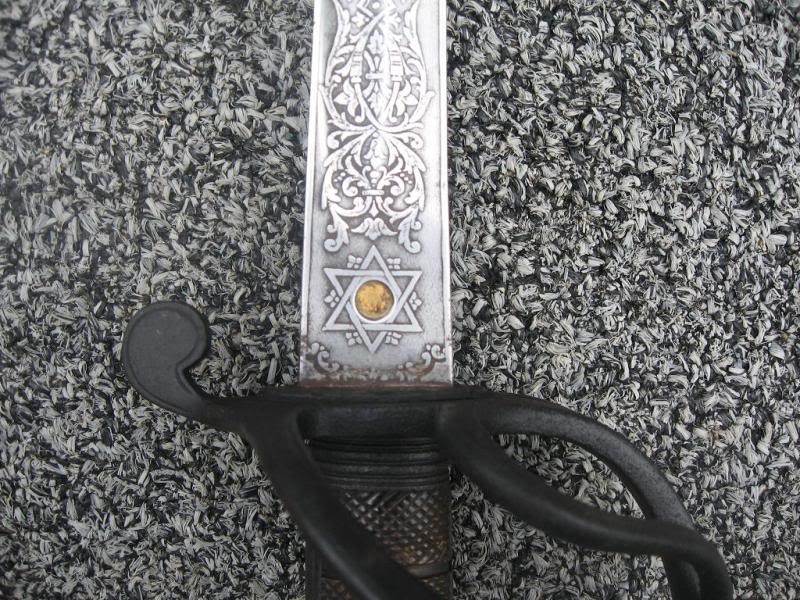
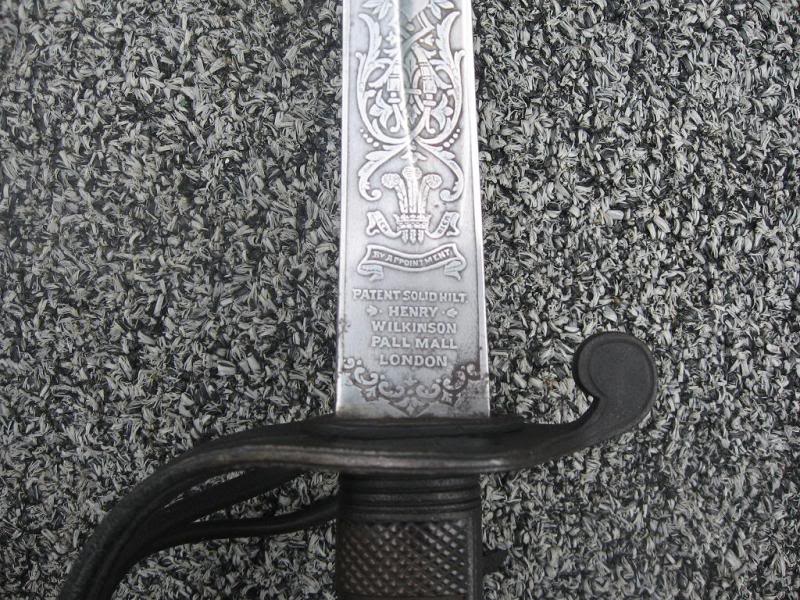
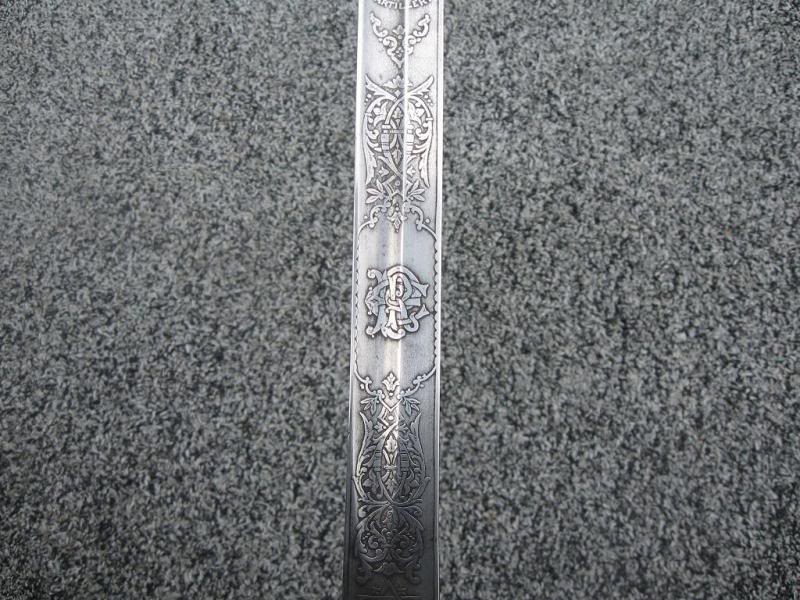
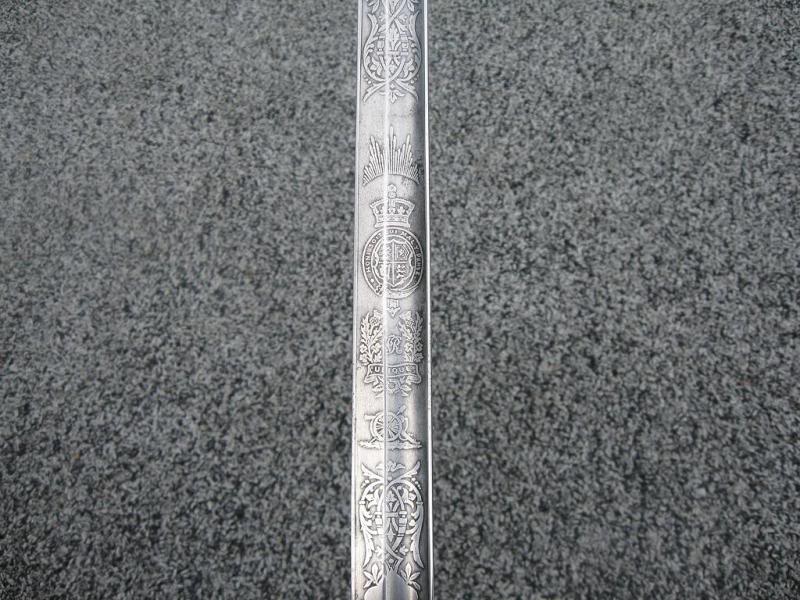
In 1914 Phillips was re-employed with the RFA as commanded the 174th Brigade, RFA, 39th Division from 19 May, 1915 to 11 April, 1916. During this period he was made a temporary lieutenant-colonel (11 August, 1915), and went to France with his unit on 1 March 1916.
From A short history of the 39th (Deptford) Divisional Artillery 1915-1918 by H.W. Wiebkin:
| Quote: | Major E. R. Phillips, R.A., was gazetted to the command of the first Brigade formed--the 174th (Deptford) Brigade, Royal Field Artillery. The disused Thames Ironworks, in Blackheath Road, were taken over as headquarters, and no little ingenuity was exercised in adapting them to the business in hand. Energy and good will once again overcame difficulties which might well have been thought insurmountable, and in a surprisingly short space of rime things were working smoothly.
"The Kentish Mercury" of June 11th, 1915, announced that the recruiting campaign in Deptford had been most successful, and that as a result two Gun Brigades--the 174th and the 179th--had been formed. "The men of the former" (the writer stated) " have already been supplied with uniform. It is hoped that the l79th will be clothed in the course of next week." This was only a fortnight after the date of the town's meeting, and a good deal of firmness and an even greater measure of persuasive power must have been exercised by the Mayor of Deptford in inducing clothing contractors to deliver uniforms when their factories were working at such high pressure. It was done, however, and the hope expressed as to the 179th Brigade was also fulfilled. |
...and:
| Quote: | | Lt.-Col. E. R. Phillips, 174th Brigade, left the Division on 11th of April, and was succeeded by Lt.-Col. J. G. B. Allardyce, R.F.A. |
Apparently he was invalided out of service. Perhaps the rigors of the campaign were too much for him at age 48 or he could have been injured. I have not been successful in tracing his life after he left the Royal Artillery.

Sources:
A Short History of the 39th (Deptford) Divisional Artillery 1915-1918
List of Officers of the Royal Regiment of Artillery 1862-1914
Hart’s Annual Army List (various)
And thank you to Dick Flory of the Great War Forum for his tremendous help! (Any errors are, of course, my own.)
|
|
  |
 |
|
Jonathan Hopkins
|
 Posted: Tue 02 Jun, 2009 10:03 am Post subject: Posted: Tue 02 Jun, 2009 10:03 am Post subject: |
 |
|
This is the second of two Pattern 1821 Royal Artillery Officers' Swords I recently acquired. I am drawn to swords with provenance, and this sword is quite exciting in that regard--more on that below. In addition to the pleasure of researching the officer, this sword is also an excellent example of an officer's fighting sword. Made by Wilkinson, it features the "Patent Solid Hilt" which was favored by many officers who expected to see active service in some corner of the empire. It also has a long (still sharp!) cavalry length blade which bears standard etched decorations including scrolling foliage, the symbols of the Royal Artillery, Wilkinson's label and proof disc, etc., as well as the owner's initials--DRM--and his crest.


The sword is in good condition. The hilt is especially fine and the blade has some minor pitting. The scabbard has some sticker damage, but a dose of Pecard Antique Leather Dressing did an admirable job of making the damage less obvious.

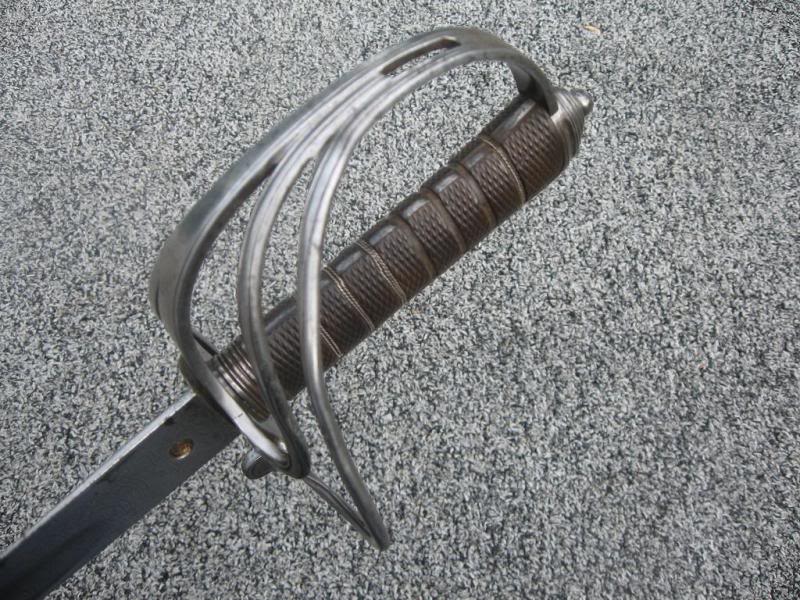
Donald Ramsay Macdonald was born at Hollymouth, County Carlow on 4 February, 1884 to D.W. Macdonald, Esq. of Hallatrow Court, Somerset. He was educated at Harrow School from 1897-1901, and and at the Royal Military Academy, Woolwich. Interestingly, he bought his sword as a young cadet in 1901.
On 15 June, 1903, Macdonald was commisioned as a 2nd lieutenant in the Royal Field Artillery. From 1903 to 1907 he served with the 106th Battery, 22nd Brigade, RFA at Hilsea and Ewshott. He was promoted lieutenant on 15 July, 1906. Between 1907 and 1910 he served at Newbridge with the 143rd battery, 48th Brigade. Then in 1910 he was posted to the 48th Battery, 36th Brigade.
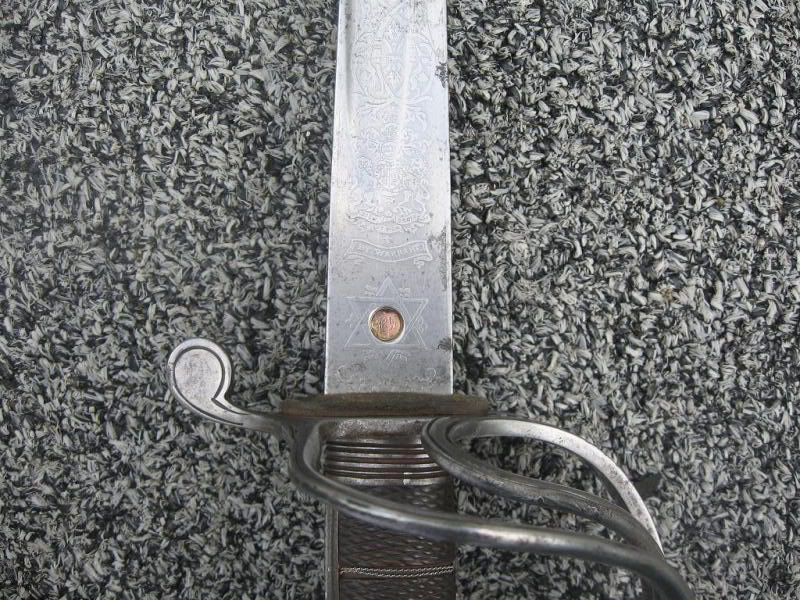
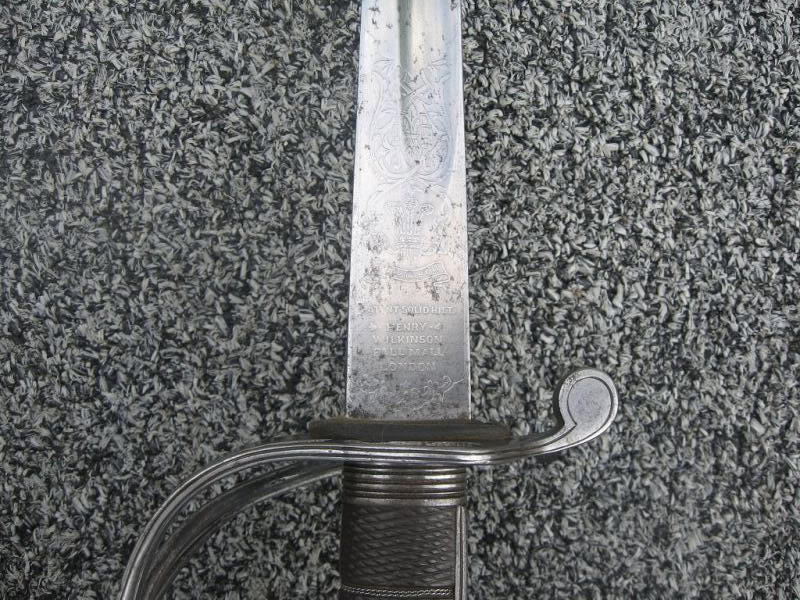
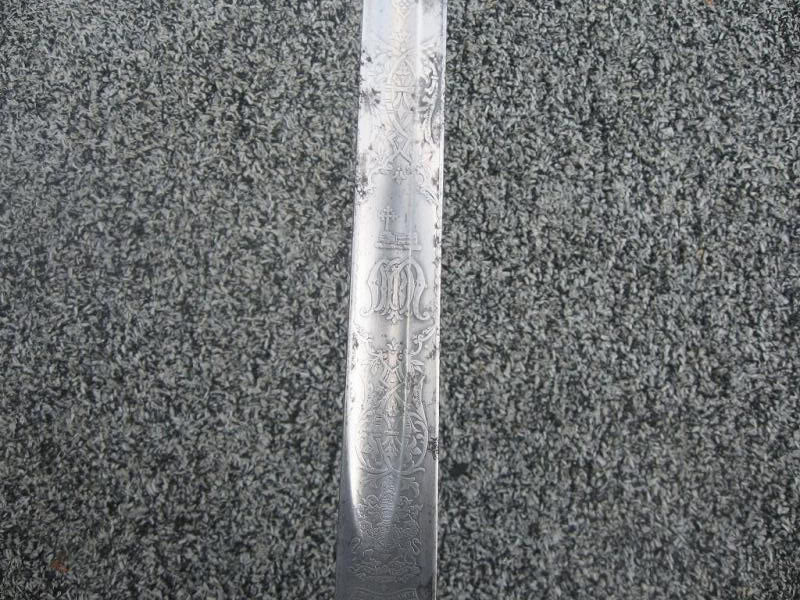
On 17 August, 1914, Macdonald embarked for France with the 48th Battery, and several months later he was mentioned in despatches in the (London Gazette, 19 October, 1914) and
promoted captain (30 October, 1914). In December, he moved to the 34th Brigade, and by January Macdonald again distinguished himself and was amongst the first to be awarded the Military Cross (London Gazette, 1 January, 1915).
On 3 July, 1916, Macdonald was promoted major. Also in that year he was posted to the 110th Brigade, RFA, and was wounded at Pozieres. He was again wounded at Langemaark in
1917. In July, 1918 he was awarded the Distinguished Service Order, and was again mentioned in despatches in December, 1918, for service with the 466th Battery, 65th Brigade, RFA.
His DSO citation in the London Gazette (Issue 30813 published on the 23 July 1918):
| Quote: | Maj. Donald Ramsay Macdonald, M.C.,
R.F.A.
For conspicuous gallantry and devotion to
duty. On various occasions he was the last
to withdraw his battery, and his handling of
a sub-group placed under his command
enabled the infantry to prolong the defence
by many hours. His courage and skill were
admirable. |
After the war, from 1919 to 1922, Macdonald was back home in Ireland as the officer commanding the 16th battery, 30th Brigade, RFA at Kildare. From 1923 to 1930 he served as officer in command of the 16th Battery, 7th Brigade, RFA at Kampee, Lucknow, and Borden. Macdonald retired in August, 1930 after nearly 30 years of distinguished service. He died 28 December, 1934 and is buried at Killeshin Graveyard, County Carlow, Ireland.
Photo from the Brennan Family History Website:
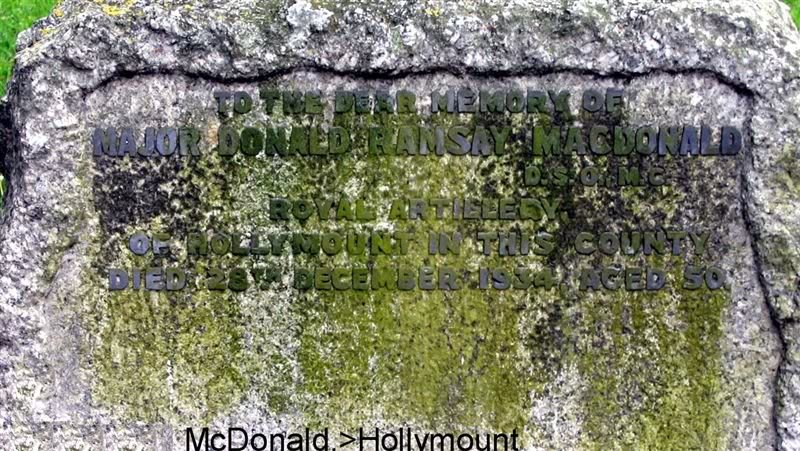
Major Macdonald's medals recently sold at auction, as did those of his two sons:
Donald Ramsay Macdonald
Lt. R.W. Macdonald, RN
Major J.R.S. Macdonald, Royal Fusiliers
Major Macdonald's WWI Medal Index Cards:


Sources:
Harrow School Register, 1845-1925
The Distinguished Order 1886-1923
List of Officers of the Royal Regiment of Artillery 1862-1914 Medal Roll for the 1914 Star
The 25th Division in France and Flanders
Hart's Annual Army List (various)
And again, a special thank you to Dick Flory of the Great War Forum, who provided the bulk of the information and was so kind to take his time to look into Major Macdonald.
|
|
  |
 |
Roger Hooper

|
 Posted: Tue 02 Jun, 2009 10:22 am Post subject: Posted: Tue 02 Jun, 2009 10:22 am Post subject: |
 |
|
I hope that Ernest Phillips survived WWI and if he was injured or ill, that he made a full recovery.
They are both very attractive swords. What is a "Patent Solid Hilt", and what is the grip made of?
|
|
  |
 |
|
Jonathan Hopkins
|
 Posted: Tue 02 Jun, 2009 10:39 am Post subject: Posted: Tue 02 Jun, 2009 10:39 am Post subject: |
 |
|
Thanks, Roger. 
From what I can tell, Phillips did survive the war. I am not sure when or how he eventually died. Hopefully he lived a long enjoyable life after WWI!
The Patent Solid Hilt, also called the Patent Tang, was a design patented in the 1850s by Charles Reeves. It is essentially a tang which is the full width (or nearly) of the grip. The grip on these swords is composed of two gutta-percha slabs bound with silver wire, and with a steel backstrap and pommel. Gutta-percha was used as early as the 1860s. Earlier grips were made from pressed leather, and less frequently, hardwood or some sort. The Patent Solid Hilt can be seen on most British cavalry troopers' swords of the 19th century, from the Pattern 1853 cavalry trooper's sword to the Pattern 1899 cavalry trooper's sword. These swords all had pressed leather grip slabs. The idea was that the wide tang strengthened the sword and made it less prone to breakage in the field.
Jonathan
|
|
  |
 |
Matthew G.M. Korenkiewicz

|
 Posted: Tue 02 Jun, 2009 11:40 pm Post subject: Posted: Tue 02 Jun, 2009 11:40 pm Post subject: |
 |
|
Congratulations on your acquisitions, Jonathan. While I don't possess the studied appreciation
or excitement of acquiring antique weaponry, I DO appreciate a little different insight you've provided
in the realm of collecting antiques. Not just as an item, but as an item associated with a particular
person, and how their histories coincide. Curious, because oddly enough, in my own quest for a
certain sword I'd looked at numerous historical pieces but never thought about researching their
owners, as much as briefly considering their makers ... B-)
|
|
  |
 |
|
Jonathan Hopkins
|
 Posted: Thu 04 Jun, 2009 7:25 pm Post subject: Posted: Thu 04 Jun, 2009 7:25 pm Post subject: |
 |
|
Matthew,
Thank you for your comments. researching the original owners does add a whole new dimension to sword collecting. A very pleasurable and addictive one, to be sure! 
Jonathan
|
|
  |
 |
|
Jonathan Hopkins
|
 Posted: Thu 04 Jun, 2009 7:27 pm Post subject: Posted: Thu 04 Jun, 2009 7:27 pm Post subject: |
 |
|
Stats for Phillips' sword:

Overall length: 40 3/4 in.
Blade length: 35 in.
PoB ~5 3/4 in.
Weight: 2 lbs. 6 1/2 oz.
Stats for Macdonald's sword:

Overall Length: 41 1/4"
Blade Length: 34 3/4"
PoB: ~4 1/4"
Weight: 2lbs. 2 1/2 oz.
Compare those stats to a more standard P1821 RA officer's sword with infantry length blade:

Overall Length: 37 1/2 in.
Blade Length: 32 1/4 in.
PoB: ~4 3/4 in.
Weight: 1 lb. 14 oz.
|
|
  |
 |
|
|
You cannot post new topics in this forum
You cannot reply to topics in this forum
You cannot edit your posts in this forum
You cannot delete your posts in this forum
You cannot vote in polls in this forum
You cannot attach files in this forum
You can download files in this forum
|
All contents © Copyright 2003-2025 myArmoury.com — All rights reserved
Discussion forums powered by phpBB © The phpBB Group
Switch to the Basic Low-bandwidth Version of the forum
|

